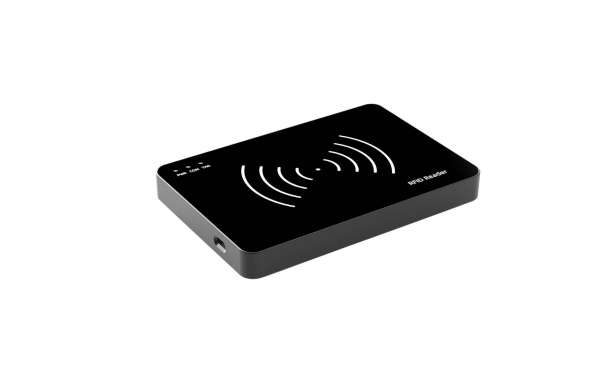We all know that in order for the RFID system to work normally, the UHF RFID Desktop Reader Writer and the electronic tag must be of the same frequency, otherwise communication and identification cannot be carried out. Different working frequencies also differ in working principle, recognition distance and performance. Internationally, RFID is divided into different frequency categories such as low-frequency LF, high-frequency HF, ultra-high frequency UHF and microwave. The working principle of RFID in each frequency band has certain differences. Among them, the working principle of LF and HF is electromagnetic coupling, while RFID in UHF and microwave bands is the way of electromagnetic emission. The difference of working frequency leads to different application scenarios. Today, let's talk about this topic.
LF low frequency RFID (125khz~134khz). Low frequency RFID is mainly used to realize the communication process through the coupling between the reader and the antenna coil of the electronic tag. The low-frequency electronic tag is a passive tag, and its working energy is obtained through the inductive coupling of the long range rfid desktop reader/writer. Generally, the working distance is short, generally about 10cm. The advantage of low-frequency RFID is that it can pass through most materials except metal, and its packaging forms are diverse. Its price mainly depends on the choice of packaging forms, and its service life can usually reach more than ten years. Compared with other frequency bands, the price of LF low-frequency reader is correspondingly higher.
LF low-frequency RFID is mainly used in animal husbandry management, automobile anti-theft system, keyless door system, vehicle management, access control system and related security systems.
HF high frequency RFID (13.56MHz). The working principle of high-frequency RFID and low-frequency RFID is to realize the communication process through inductive coupling. The way for high-frequency electronic tags to obtain the working ability is the same, and both belong to passive tags. The working distance of high-frequency RFID is much larger than that of low-frequency RFID, which can reach about 1m. High frequency RFID can penetrate most substances except metals, and its reading speed is better than low-frequency RFID. In addition, its use in the world is not too limited, and the price has great advantages over low-frequency.
The biggest advantage of high-frequency RFID over low-frequency RFID in reading and writing is batch reading, and the transmission rate is faster. The main application scenarios of high-frequency RFID can be subdivided from the perspective of "high frequency card" and "high frequency tag". High frequency RFID card applications, including bank cards, bus cards, access cards, etc., as well as campus one card, which can be seen everywhere in our daily life. High frequency RFID "tag" applications are mainly in the fields of book and file management, anti-counterfeiting and traceability, unmanned retail, industry, medical treatment and so on.
UHF RFID (860mhz~960mhz). The working principle of UHF RFID is backscattering. The electronic tag is located in the far field of the reader writer antenna radiation field. The small rfid reader/writer usb antenna radiation field provides RF energy for the passive tag to wake up the tag. The operating frequency varies in different countries and regions. For example, it is 902~905mhz in North America and 950~956mhz in Japan. UHF has a shorter wavelength, so it is more easily absorbed by liquids. The antenna of RFID tag is generally strip and tag shaped, and the antenna has linear and circular polarization to meet the corresponding application requirements. UHF RFID has a higher transmission rate and can read a large number of electronic tags in a short time.
The powerful reading ability and price advantage of UHF RFID make many applications possible. It is also the mainstream direction of RFID development in the future. It has many application scenarios, including shoes and clothing, logistics parcels, supermarkets, unattended retail, books and archives, industry, agriculture, asset management, tires, catering, aviation luggage, medical treatment and so on.




